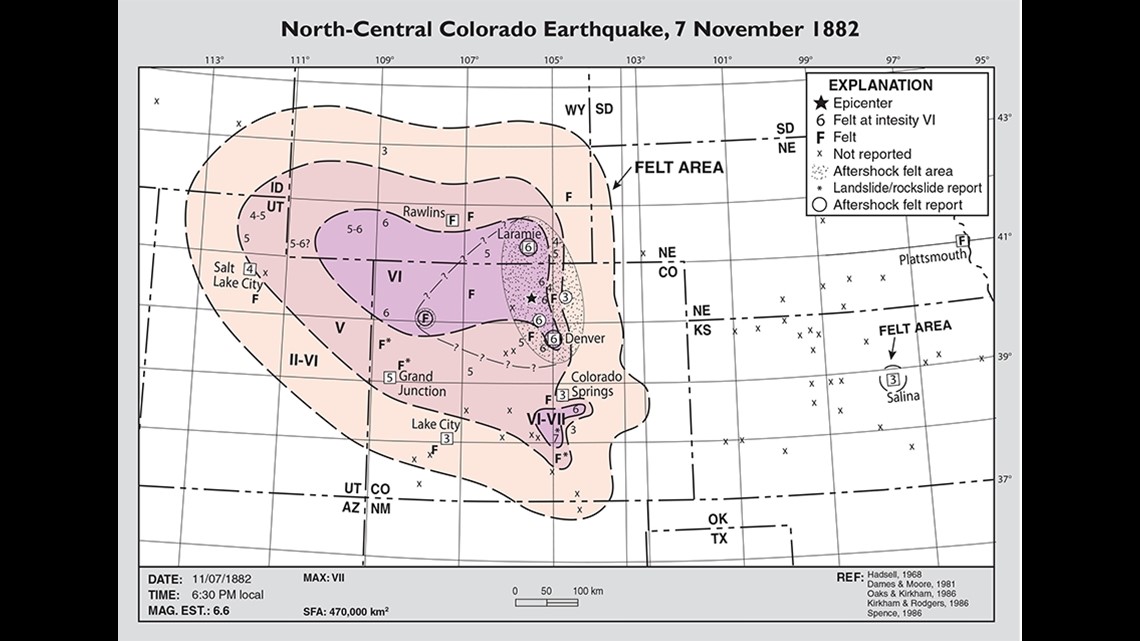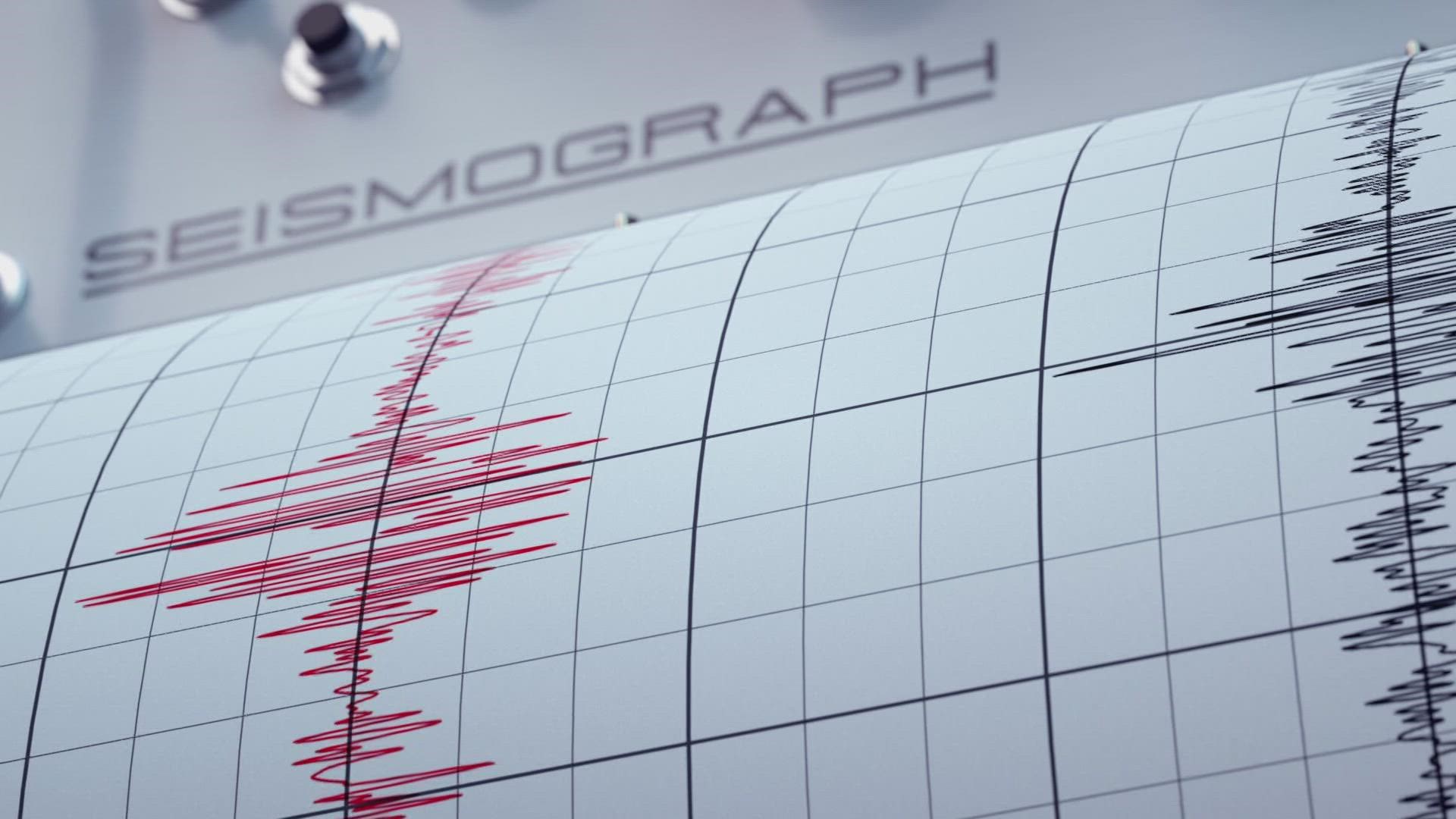GOLDEN, Colorado — The strongest earthquake to ever hit Colorado occurred on November 7, 1882. Geologists today, refer to it as Colorado's Big One.
The headline in the Rocky Mountain News – Terra Totters, a perceptible earthquake shock felt in the city.
“It knocked out power here in Denver. Knocked the generators right off of their seating,” said Matt Morgan, Director of the Colorado Geological Survey (CGS). “In Grand Junction, people were running out of their houses thinking they were getting bulldozed over.”
He said they didn't have the equipment back then to measure earthquake intensity, but scientists with CGS were able to estimate that it was a magnitude 6.6 by using eyewitness reports of shaking and damage from newspapers.
>>click the links to read other news reports from 1882
The Pueblo Chieftan - Headline: "Mother Earth. Her placid breast upheaved and moved by contending passions.
The Aspen Times - The Earthquake. The shock gives Aspen a call and turn tables. Clocks and bird cages topsy-turvy.
CGS also did a field study to try to find the epicenter, but the evidence was too weathered to get a definitive answer. They can say however that it was about 30 miles north of Estes Park and the shaking was strong enough to be felt in 5 states.


The earthquake intensity map created by the CGS shows that magnitude 6 or greater shaking would have been felt in a large area including Estes Park, Laramie, Steamboat Springs and even Golden.
Denver would have felt a magnitude 5.
“Using the building stock and the infrastructure, in 2013 it would have cost about $23 billion to replace the structures that were damaged," said Morgan. "Nowadays, we’re probably pushing $30 billion if not more.”
At the Colorado Geological Survey, they monitor Colorado quakes and study its fault lines. Morgan said just this year alone there have been 50 earthquakes in the state.
Although they were all magnitude 3 or lower which he said are hardly noticeable to most people.
He said the 1882 quake does however show the large earthquake potential in Colorado. The CGS has identified faults capable of producing earthquakes near magnitude 7.
He named the Sangre de Cristo fault the runs along the east side of the San Luis Valley, and Cheraw fault on the eastern plains near La Junta possibly having that magnitude 7 potential.
If one that size hit the right spot, Morgan said it could destroy cities like Denver and Colorado Springs.
"But really the faults that scare me the most are the ones we don't know about yet," said Morgan. "There are a great number of faults to still be discovered in Colorado, and some of the other ones still need to be studied more."
He said that one of the best ways for geologists to study a faults quake potential is a process called trenching. That requires human scientists and costs about $15,000 to $20,000.
The CGS can only afford to occasionally trench a new fault.
"For instance, the Ute Pass and the Rampart Range fault that runs along Colorado Springs -- not much known about those ones," he said. "But are right underneath a huge population center."
Though large earthquakes are very uncommon in Colorado. The second strongest ever measured was in 1960, with a magnitude 5.5 between Montrose and Ridgway.
“Not trying to scare anyone, just saying we’re trying to understand that. So we know what the past looked like and we can model that to the future”
SUGGESTED VIDEOS: Colorado Climate
More stories from Cory Reppenhagen:

